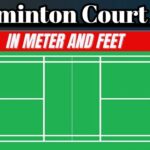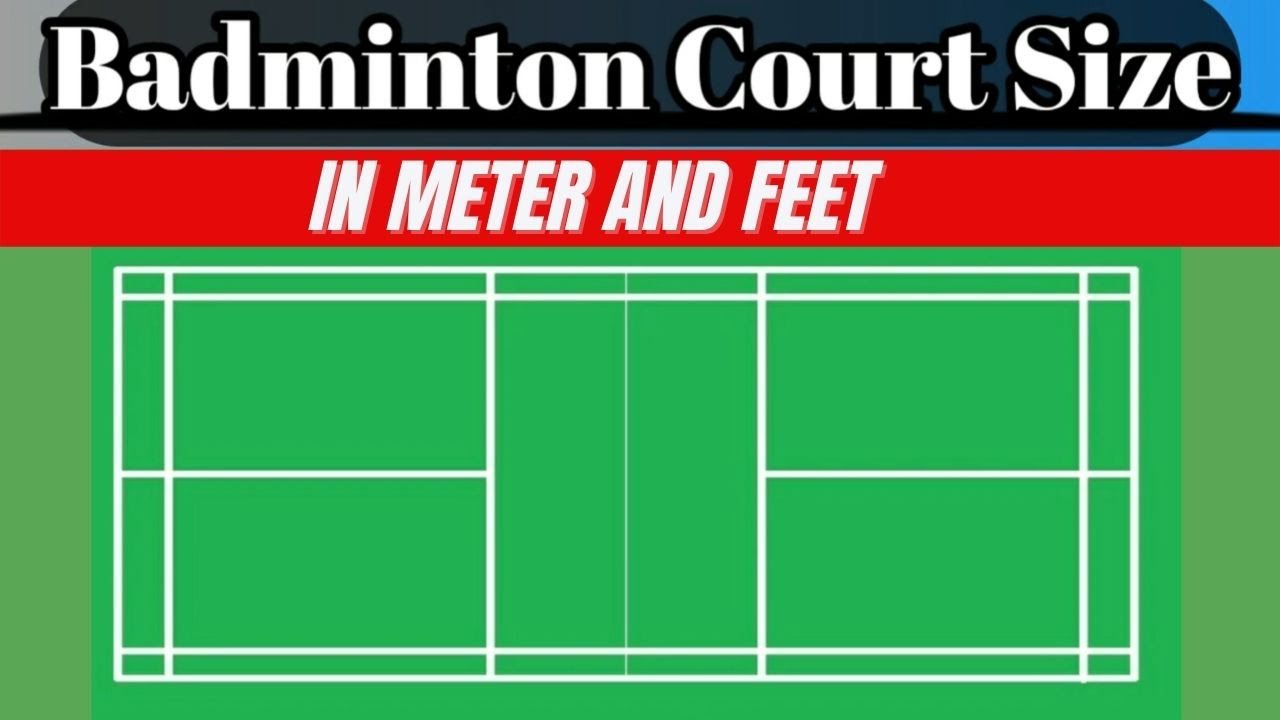How to Measure Badminton Court in Feet in Feet
Badminton is a popular sport enjoyed by millions of people worldwide. To ensure fair play and maintain a standard playing environment, it is crucial to have accurate badminton court dimensions in feet. In this article, we will guide you through the process of measuring badminton court dimensions in feet. Whether you’re a professional player, a coach, or simply a badminton enthusiast looking to set up a court in your backyard, understanding the correct measurements is essential. So, let’s delve into the details and learn how to measure badminton court dimensions in feet accurately.
Table of Contents
Why Accurate Measurements Matter
Accurate measurements of badminton court dimensions in feet are crucial for several reasons. Firstly, they ensure fair play by providing a level playing field for all players. Secondly, standardized badminton court dimensions in feet enable players to develop their skills and strategies based on consistent court sizes. Thirdly, for tournaments and competitions, precise measurements guarantee uniformity across venues, allowing players to adapt quickly to different playing environments.
Moreover, adhering to correct badminton court dimensions in feet ensures safety by providing adequate space for players to move without any obstructions. Lastly, knowing the proper measurements allows enthusiasts to set up courts at home or in community spaces, promoting the sport’s accessibility. Therefore, understanding and measuring badminton court dimensions in feet is vital to enhance the overall experience of the game.
The Standard badminton court dimensions in feet
To begin measuring badminton court dimensions in feet, it is essential to know the standard measurements approved by the Badminton World Federation (BWF). The official badminton court dimensions in feet for a singles court are 44 feet long by 17 feet wide (13.41 meters by 5.18 meters), while for a doubles court, it is 44 feet long by 20 feet wide (13.41 meters by 6.10 meters).
The net divides the court into two equal halves, and it should be 5 feet high (1.524 meters) at the center. The sidelines for singles and doubles courts are marked at 1.5 feet (0.457 meters) from the edges, indicating the area within which the shuttlecock must land during play. By following these standard measurements, you can ensure a proper and professional badminton court.
Gathering the Required Tools
Before you start measuring the badminton court dimensions in feet, gather the necessary tools to ensure accuracy. You will need a measuring tape, preferably a long one that extends up to at least 50 feet (15 meters). Make sure the tape is sturdy and in good condition to avoid any discrepancies in measurements. Additionally, it is helpful to have a marker or chalk to mark the court’s boundaries during the measuring process. These tools will assist you in obtaining precise measurements and aid in marking the court accurately. Once you have your tools ready, you can move on to the next step of measuring the badminton court dimensions in feet.
Measuring the Length of the Court
To measure the length of the badminton court accurately, begin from the back boundary line on one side of the court. Using the measuring tape, extend it along the sidelines until you reach the back boundary line on the opposite side. Ensure the tape is straight and properly aligned with the court edges. Hold the tape in place firmly and read the measurement where it meets the back boundary line.
Note down the measurement in feet and inches, and remember to repeat this process for both ends of the court. By measuring the length correctly, you will have an accurate understanding of the badminton court dimensions in feet required for a standard badminton court.
Determining the Width of the Court
To determine the width of the badminton court, start from one sideline and stretch the measuring tape across to the opposite sideline. Make sure the tape is taut and parallel to the sidelines. Hold it firmly and read the measurement where it meets the sideline.
Repeat this process for both ends of the court to ensure accuracy. Once you have measured the width, note down the measurement in feet and inches. By correctly determining the width of the court, you will have the necessary information to establish the proper badminton court dimensions in feet for a badminton court.
Marking the Court Boundaries
After measuring the length and width of the badminton court, the next step is to mark the court boundaries. Using a marker or chalk, start from one corner of the court and mark the points where the sidelines and back boundary lines intersect. Repeat this process for all corners of the court until you have marked the complete boundary.
Make sure your markings are clear and visible, as they will serve as a guide during play. Additionally, mark the centerline and the area where the net will be placed. By marking the court boundaries accurately, you create a visually defined playing area that adheres to the proper badminton court dimensions in feet.
Verifying the Net Height
To ensure the net height is correct, measure it at the center of the court. Using the measuring tape, stretch it vertically from the ground to the top of the net. The net should be 5 feet high (1.524 meters) at the center, maintaining the same height throughout its entire length.
Adjust the net accordingly if it does not meet the required height. A properly positioned net enhances gameplay and maintains fairness. Therefore, double-checking the net height is an important step in measuring badminton court dimensions in feet accurately.
Final Check and Recommendations
Once you have measured and marked the badminton court dimensions in feet, it is essential to perform a final check to ensure accuracy. Take a step back and visually inspect the court to see if the badminton court dimensions in feet align with the standard measurements. If any discrepancies are found, make the necessary adjustments.
Additionally, it is recommended to consult the official guidelines provided by badminton governing bodies such as the BWF to ensure compliance with any specific regulations or variations. By following these recommendations and paying attention to detail, you can confidently create a badminton court with the correct badminton court dimensions in feet.
Conclusion
Measuring badminton court dimensions in feet is a crucial step in creating a fair and professional playing environment. Accurate measurements enable fair play, consistency, and safety for all players. By understanding the standard measurements and using the right tools, you can easily measure the length, width, and net height of a badminton court.
Marking the court boundaries and performing a final check ensure that your measurements are precise. Whether you are setting up a court for personal use or organizing a tournament, adhering to the correct badminton court dimensions in feet enhances the overall experience of the game.
Learn about: Unlock your business’s growth potential with reliable and high-speed Comcast Business Internet solutions tailored to your needs.











